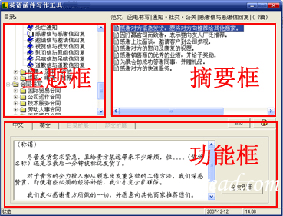收到面试通知后要做的5件事
|
Congratulations – you have made it past the résumé review and have been selected for an interview. Before you take that call or go to the in-person meeting, remember to do these five things. 1. Review what you have sent so far. Retrieve the exact résumé and cover letter that you submitted for the position. Many job seekers customize their résumé and cover letter for each position, so reviewing your documents ensures you know what the interviewer saw before selecting you. Be prepared to discuss anything listed on your cover letter or résumé. You also want to make several copies of that same résumé to bring with you to an in-person meeting.
2. Compare the job description to your résumé. First, highlight the top three to five requirements of the role. Next, set up a “side by side” comparison of what the role requires and how your background lines up. Third, write out examples that succinctly demonstrate that you possess the desired skills/traits. Fourth, practice saying those examples in front of a mirror OUT LOUD. It may seem awkward, but the interviewer can only judge what you say and how you say it, not what is in your head. Practicing in front of a mirror ensures that the words flow well and that you look comfortable while saying them. 3. Research the latest news/events at the company. Using LinkedIn, the corporate website, Twitter, Facebook and Pinterest, read any current company updates. Pay close attention to items that may impact your targeted role. For example, if you notice several recent changes in the company’s management team, note if any of those managers had oversight of your potential department. Was a replacement hired? What was this person’s previous work experience? Listing all of this is a great way to cement the events in your memory and to better organize the information in a useful way. 4. Turn the research into questions. People are frequently hired based on their questions more than their answers. The reason for this is that well-thought-out questions display research, deeper understanding of the position/company/industry and effort beyond the average job seeker. Using the information gained during the research process, create questions that show your knowledge and interest. If you can find the answer to your question on the company website, that is a clear sign that you should not ask it during the interview. 5. Practice the messy stuff. Review your résumé and determine how you will describe any weak spots or areas of uncertainty. The interviewer only knows what you have submitted in writing before the interview. When a job seeker seems uncertain or rambles when asked a question, it is a sign to an interviewer that this is an area that may need to be discussed in more depth to gain clarity. If you are clear in your presentation, you are less likely to send a red flag that triggers more probing. A confident delivery puts an interviewer at ease. |









